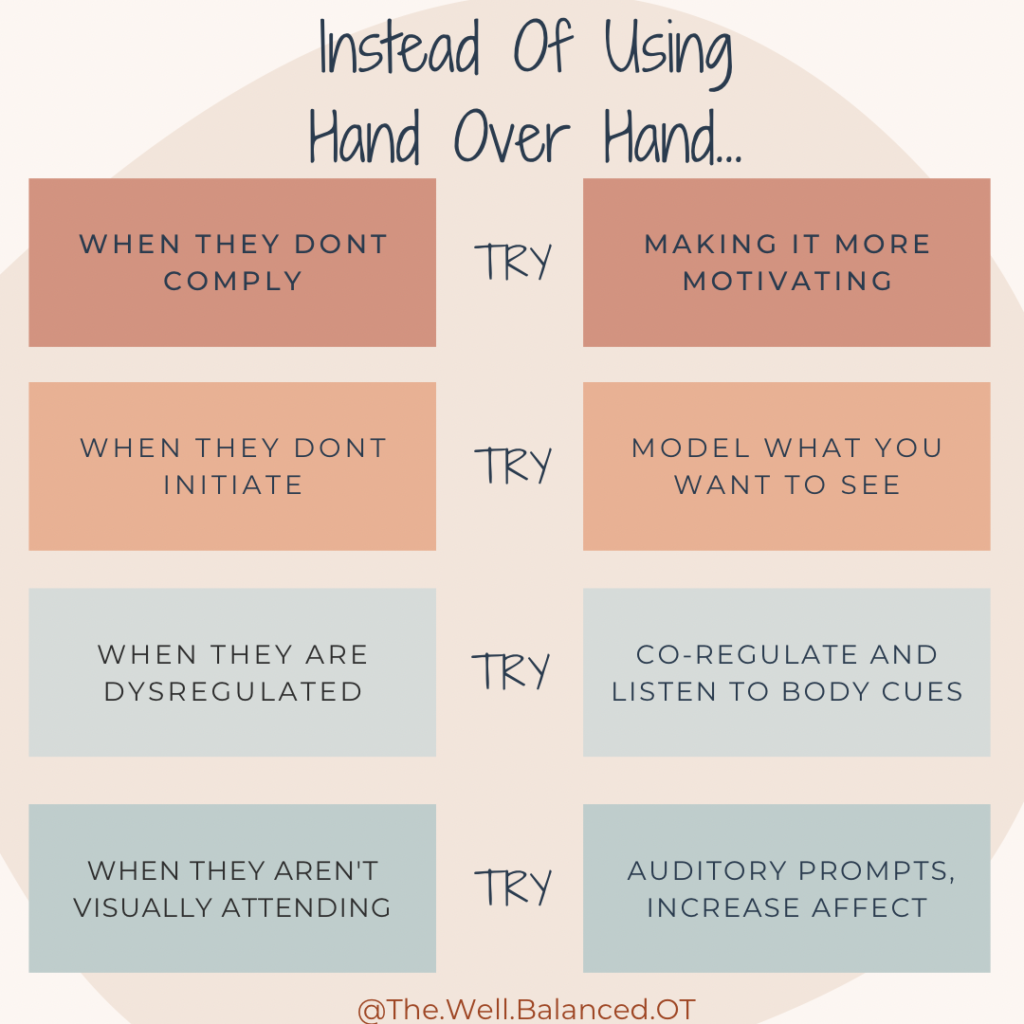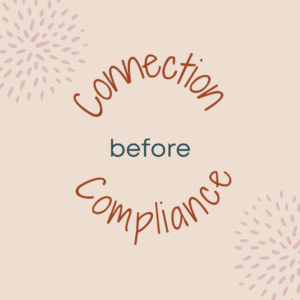When interacting with kids, connection always comes before compliance. It doesn’t matter if they are developmentally on target or have developmental delays. It doesn’t matter if they have a diagnosis or not. It doesn’t matter if you’re interacting with them at home or at school.
Connection comes first.
Before they let us in.
Before we can expect them to do hard things.
Before they trust us.
Before they are willing to complete a task for a second time.
Connection before Compliance
It’s not always easy. It requires us to take a step back. To start where they are. To be patient. To be willing to let go and listen. To throw our “plans” to the side.
How do we Connect?
- Ask questions: And not yes or no questions – you wont get much interaction with those.
- Reading their body language
- Go slow
- Imitate what the child is doing. Not in that annoying way but mimic how they are playing, the sounds they are making.
- Provide them choices
- Listen to their reactions and ask for their input
- Compromise: Child led activities will facilitate confidence, problem solving and trust.
- Foster feelings of safety
Does it occasionally take a long time? Absolutely. But it’s worth it.
Then what?
When that connection happens the space for learning and engagement grows. They are eager to compromise because they know their feelings and ideas are heard and respected. They feel safe to express big emotions. They are intrinsically motivated to complete a task presented to them because that task is based on their interests. Research has shown that when a child is intrinsically motivated they are more likely to gain long term skills. This article in BBC also highlights the benefits of being intrinsically motivated, rather than rewarded with something (extrinsic motivation).
Compliance: Hand over Hand

Before we go, I want to touch on a subject: hand over hand. It’s when an adult places their hands over the childs in order to get them to initiate or move through the motor pattern. In other words, hand over hand is a means of achieving compliance. This often activates their fight or flight response, causing the child to go into a dysregulated state. Meg Procter is the queen of educating therapists and families on how to best work with autistic children. You can read her blog post “Rethinking Hand-Over-Hand Assistance for Kids On the Autism Spectrum” for more information.
If you want more education on working with the autistic community, read all about my CEU recommendations!
What do you do to build the connection?







